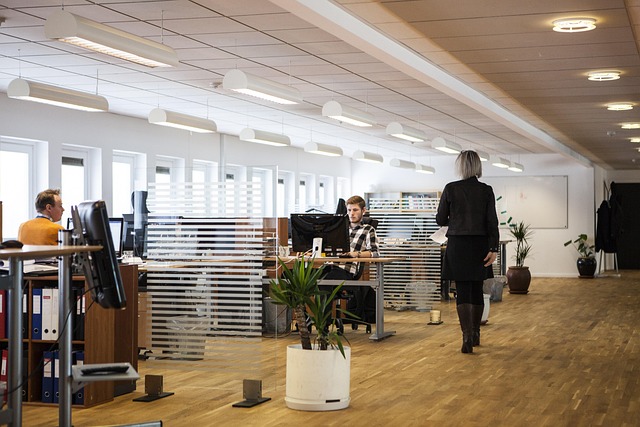Real estate professionals must adapt to modern collaboration spaces, catering to remote work, hybrid models and agile operations with flexible layouts, private areas, tech integration, and modular designs. This trend meets employee preferences, boosts productivity, fosters interaction, and offers a competitive advantage through dynamic workspaces.
In today’s dynamic business landscape, real estate professionals are increasingly recognizing the importance of flexible layouts that cater to modern collaboration spaces. This article explores how innovative design strategies can accommodate diverse team needs, fostering productivity and enhancing work cultures. From understanding emerging trends in real estate to evaluating the impact on employee satisfaction, we delve into creating environments that support effective collaboration and drive success for organizations.
Understanding Modern Collaboration Spaces in Real Estate

In today’s dynamic business landscape, understanding modern collaboration spaces is paramount for real estate professionals. Flexible layouts that cater to diverse work styles and team sizes are increasingly sought after as organizations embrace remote work, hybrid models, and agile operations. Real Estate experts must recognize that contemporary offices are no longer just about cubicles and conference rooms; they need to design spaces that facilitate spontaneous brainstorming sessions, private focus areas, and collaborative hubs, all while seamlessly integrating technology.
This shift towards more adaptable and inclusive environments reflects a growing awareness of employee preferences and productivity needs. By understanding these evolving collaboration dynamics, real estate agents and developers can create spaces that not only accommodate current trends but also future-proof businesses against rapid changes in work patterns.
Designing Flexible Layouts for Diverse Teams

In the realm of modern collaboration, flexible layouts are transforming real estate to cater to diverse team needs. Spaces that once relied on rigid, traditional designs are now embracing adaptability to facilitate various workstyles and preferences. This shift is driven by the understanding that different teams thrive in distinct environments—from open-plan offices fostering spontaneous interactions to private cubicles offering focused solitude.
Designers and real estate professionals play a pivotal role in creating these dynamic landscapes. By prioritizing modular furniture, reconfigurable walls, and adjustable lighting, they enable transformations that accommodate both large group meetings and intimate brainstorming sessions. Such adaptability not only enhances productivity but also promotes well-being, ensuring every team member finds their ideal workspace within the same physical area.
The Impact of Accommodating Collaborative Work Cultures

In today’s dynamic business landscape, real estate plays a pivotal role in fostering collaborative work cultures. Flexible layouts that cater to diverse team dynamics and work styles are becoming the norm, enhancing productivity and innovation. By designing spaces that encourage interaction and knowledge sharing, organizations can create an environment where ideas flourish and collaboration becomes second nature.
Accommodating collaborative work cultures has profound implications for both employee satisfaction and organizational success. Open-plan offices, versatile meeting areas, and thoughtfully designed break spaces contribute to a more connected and engaged workforce. This shift in real estate strategy not only transforms the physical workplace but also influences how teams interact, problem-solve, and innovate, ultimately driving business growth and competitive advantage.






